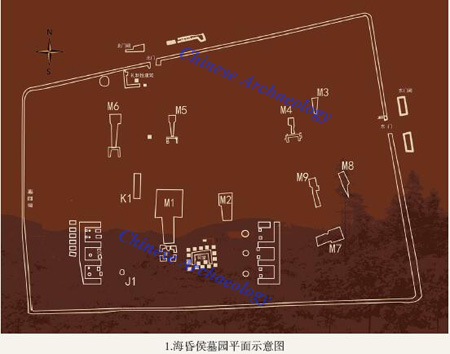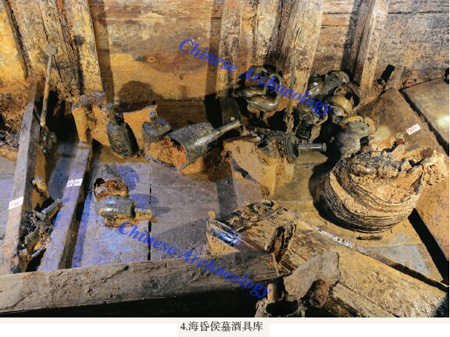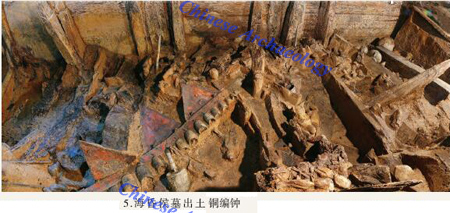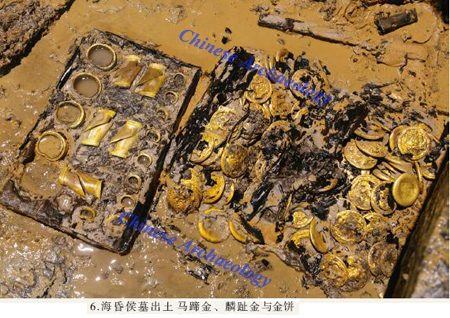Great Marquis Haihun’s tomb found in Nanchang, Jiangxi Province
From:Chinese Archaeology NetWriter:Date:2016-01-15
The excavation of Marquis Haihun’s tomb at Nanchang, Jiangxi Province, has been conducted by the Jiangxi Provincial Institute of Archaeology and Cultural Relics and associated institutes in Nanchang, Jiangxi Province since March, 2011. This tomb is roughly dated back to 2000 years ago.
The plan of Marquis Haihun's cemetery

Storge of drinking vessel
The cemetery is composed of Marquis Haihun’s tomb and his wife’s tomb, along with 7 associated tombs. Covering an area of 40,000 square meters, the cemetery garden was surrounded by walls, gates and funeral towers. There were also a ceremonial palace, a memorial hall and accommodations for management officers within the cemetery. The road and drainage systems were well arranged. The associated family tombs were located at the east and north sides of the cemetery, each of which was attached by a ceremonial hall. While Marquis Haihun’s tomb and his wife’s tomb were arranged in the high and center location, buried in the same cemetery but different burial pits.

Bronze chime-bell unearthed from the tomb

Gold items unearthed from the tomb
Through archaeological investigation and exploration, there found many archaeological sites associated with Marquis Haihun’s state in the vicinity of his tomb including the Zijin city ruin, the family cemetery of Marquis Haihuns and cemetery for common people. Inferred from the written record, the Zijin city is the capital of the Haihun state during the Han Dynasty. The cemetery of both generations of the Marquis and common people were located west and south to the city.
Valuable information has been retrieved from the excavation in the last five years. The survey area is up to 1,000,000 square meters, 10,000 square meters of which has been excavated. A large number of assemblages including golden artifacts, copper items, iron items, jades, lacquer vessels, woven items, porcelains, bamboo scripts and so forth have been recovered, numbered around 10,000 pieces.
Marquis Haihun’s tomb is the tomb of the West Han Dynasty that has been recovered so far with the best preservation. The structure, the function and the ceremonial system all have been well preserved, casting light upon the research on burial system of dukes and princes of the West Han Dynasty. This is the only tomb found so far south to the Yangtze River which is attached by a chariot pit buried with real horses. Its scale, design and structure are strikingly typical to the burial standard of a duke in the West Han Dynasty. All these assemblages recovered were elaborately made, reflecting the luxury life of the elites during the Han Dynasty. Moreover, the tomb is associated with other sites such as the capital city and family cemetery, suggesting of an entire layout of a state in the Han Dynasty. In summary, Marquis Haihun’s tomb is a seminal discovery and it renders important evidence to our insight into the funeral and metropolitan system of the West Han Dynasty. (Translator: Dong Ningning)

